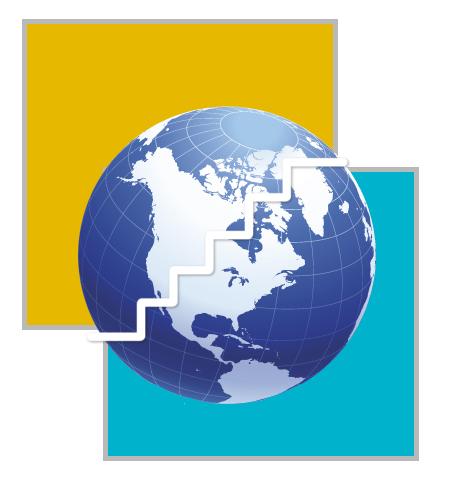News
The World in 2022
A masterclass on The World in 2022 was hosted by Founding Fuel, a digital media company based in Mumbai, and anchored by Indrajit Gupta, the founder of Founding Fuel. SFG President Sundeep Waslekar was invited to speak on the panel along with Kanti Bajpai, International strategic affairs analyst and author of India Vs China: Why They Are Not Friends; Viral Acharya, CV Starr Professor at NYU Stern and former Deputy Governor of the Reserve Bank of India; Nicholas Parker, Cleantech pioneer, investor and Chairman of Parker Venture Management
Key Takeaways of the Masterclass (with thanks to Founding Fuel for the summary)
The big stories of 2021
â— The vaccination story—the global collaboration to get a variety of vaccines out.
â— Inflation —The rise in prices has not been transitive. It is astonishing that a health shock got demand to accelerate faster than supply. The deeper message is, how the developed-economy policies and growth spectrum are now becoming comparable to what used to be emerging economies.
â— De-carbonisation—in 2021, the light bulb went off for humanity. That we are in deep crisis; and climate is not the issue, but a symptom. Now there is a race on to decarbonise—because of the economic upsides of doing so.
â— The world entered a paradox, arising from contradictions between geopolitics and climate politics. There is hostility between the US and China and an effort to decouple China from the world economy. But if you look at it from a climate politics point of view, there is a strong integration of China in the Western economies.
â— When it comes to geopolitics, India sides with the US; when it comes to climate politics India sides with China.
â— Russia cannot be forgotten. The hostility between the US and Russia is as strong as the expected hostility between the US and China.
Geopolitics in 2022
â— You now have a trilateral conflict between the US, China and Russia. Though Russia is often, but not always, on China’s side.
â— A lot of psychological war will take place—with troop movements near borders, and a lot of brinkmanship.
â— Outer space will be the new theater of competition for the US and China. Outer space will get weaponised.
â— There is also a hypersonic missiles arms race that is taking place.
â— While the US is promoting hostility with Russia and China, yet there are strategic stability talks with both countries—to put a leash on deadly weapons.
â— Russia is often discounted, but it has shown that it is capable of intruding into what looks like a bi-polar world.
â— And Asia is beginning to wake up to Russia’s role in the region.
China’s impact on inflation, cost of borrowing, and labour in developed economies
â— For the longest time Americans have enjoyed low prices on a lot of things, thanks to China. That also allowed the US to divert its human capital to more high-end products, value-add, R&D etc.
â— The decoupling with China is going to have serious implications for global supply chains. The transition risk of this will not be easy and corporates may not embrace it fully. This also has deeper implications for prices and inflation.
â— Low inflation has led to extraordinarily low cost of borrowing in the developed countries. Interest rates will now rise.
â— China in its own lifecycle, is moving away from creating growth primarily through infrastructure investments, manufacturing, capacity expansion, etc, toward building its own consumption engine. There is a demographic aspect too—they can’t keep supplying labour like they did in the past. That also means labour in the West will get its bargaining power back.
The tech battles
â— There’s a deeper transformation underway that is not so obvious. The notion of eco-civilisation is taken very seriously in China. The Chinese are thinking through a systems-based approach. This provides an opportunity for dialogue with them.
â— AI is often seen as an area of competition and conflict. Yet AI can be used to decrease carbon emissions by 10 per cent. China is reaching out to Canada, Singapore and other countries for cooperation on using AI and other new technologies.
â— In the cleantech space, a lot of dealmaking is going on though no one is talking about it.
Is China establishing geopolitical leverage using its economic leverage? Are they colonising strategic hotspots?
â— The Chinese themselves may not know!
â— They could be overextending.
â— China has its own public opinion, and people ask why they are giving away their funds to other countries, when there are things to fix at home too.
â— The more Xi Jinping centralises, the more one has to ask, if the Chinese juggernaut is rolling along, then why does he need to do that? And if the Chinese juggernaut doesn’t roll economically, then that’s not good news for the rest of us.
â— On the ground, China has serious problems with resources—especially water.
Is Asia emerging as the next battleground?
â— Is Asia indeed such an engine of growth? Note that the US and the EU’s combined GDP is $35 trillion. China + Japan are barely $20 trillion. The rest are relatively small.
â— So, in “Asia rising”, it’s really China.
â— ASEAN collectively has a bigger GDP than India. It is charting rates of growth that are slightly lower than India; every country except Cambodia and Myanmar, has a higher per capita income than India. They do better on virtually every index of human development.
â— India has had the most serious decline in growth rate of any major economy in the world during Covid.
â— If Asia is rising, it should manage its security issues—India - China stalemate; Taiwan is looking to America, and not the rest of Asia, to help out; East China Sea quarrel with Japan; South China Sea.
â— In Asia, there’s the rise instead of the QUAD—two partners of which are Western countries; AUKUS—Australia, UK, US. The UK, France and Germany are sending their navies to Asia for the first time in some 60 years, to lend security to Asians.
â— Where Asia does seem to be doing somewhat better is on trade arrangements.
â— India is not in the Regional Comprehensive Economic Partnership (RCEP), or the Comprehensive and Progressive Agreement for Trans-Pacific Partnership (CPTPP). It is not in APEC either. And wants to renegotiate its trade agreements. No country in Asia has progressed without foreign trade. India is talking about doing trade agreements with the US, the EU, the UK, Australia to compensate for taking itself out of Asia—but that can’t make up for not being in RCEP etc.
â— India has not evolved out of its protectionist mindset on trade. India fundamentally distrusts competition and creative destruction. Some of this has to do with the influence the top 10-12 industrialists have over policy. This protectionist attitude means Indian companies don’t produce world class goods.
â— South Korea is emerging in terms of military tech and culture as an area of influence.
â— We are trapped in a conversation of growth—which is yesterday’s story. We are talking of growth in a material way, which is no longer possible. For instance, without the next green revolution in India, there is no future for farmers, for food security, etc. So where is the opportunity? In the West, we’ve seen the rise of plant-based protein as an alternative to meat—you’d think India would be a leader in this area. India has to grasp these opportunities.
â— In Indonesia and elsewhere, people are innovating to enable people at the bottom of the pyramid to feed themselves and be a part of the consumer economy.
â— The US pullout from Afghanistan has implications for the EU and for India—not so much for the rest of Asia.
Global economic recovery
â— Are the advanced economies looking more and more like what we used to think of emerging economies?
â— With Covid, one would think the world would focus on sustainable growth. But in 18 months, we’ve come back to “growth has to be resurrected at all costs”. There’s a pattern of growth desperation—we are unable to accept even mild shocks to growth.
â— This also comes from the very high level of debt. Overall, the world’s debt is something like 250 per cent of GDP.
â— Inflation is rising. And central banks’ mandate requires them to raise interest rates—which will be politically unpopular.
â— Inflation may be a sign to slow down, not focus so much on short-term demand-driven growth.
â— We are liquidating the asset (planet Earth) and calling it income. We are using 1.6 times the Earth’s annual regenerative capacity.
â— In 2022 we will see less fiscal stimulus. We will see capital markets take over. They will look for the resilience of companies.
Sustainability
â— Reverse urbanisation: We are talking about material growth vs growth. Last year with labour moving back to their villages in India, we saw a story of reverse urbanisation. If we are looking at resilience, new technology allows you to do many things in the village that you could earlier only do in the city.
â— The original ideas of small is beautiful, harnessed to technology, throw up interesting opportunities for resilience.





